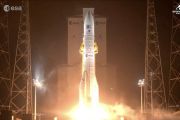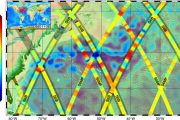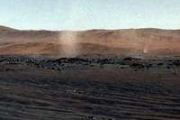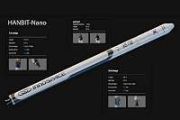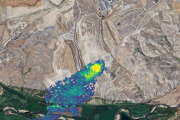
Copernical Team
James Webb Space Telescope has completed testing
 After successful completion of its final tests, NASA's James Webb Space Telescope is being prepped for shipment to its launch site.
Engineering teams have completed Webb's long-spanning comprehensive testing regimen at Northrop Grumman's facilities. Webb's many tests and checkpoints were designed to ensure that the world's most complex space science observatory will operate as designed onc
After successful completion of its final tests, NASA's James Webb Space Telescope is being prepped for shipment to its launch site.
Engineering teams have completed Webb's long-spanning comprehensive testing regimen at Northrop Grumman's facilities. Webb's many tests and checkpoints were designed to ensure that the world's most complex space science observatory will operate as designed onc New class of habitable exoplanets are 'a big step forward' in the search for life
 A new class of exoplanet very different to our own, but which could support life, has been identified by astronomers, which could greatly accelerate the search for life outside our Solar System.
In the search for life elsewhere, astronomers have mostly looked for planets of a similar size, mass, temperature and atmospheric composition to Earth. However, astronomers from the University of C
A new class of exoplanet very different to our own, but which could support life, has been identified by astronomers, which could greatly accelerate the search for life outside our Solar System.
In the search for life elsewhere, astronomers have mostly looked for planets of a similar size, mass, temperature and atmospheric composition to Earth. However, astronomers from the University of C Titan-in-a-glass experiments hint at mineral makeup of Saturn moon
 Titan, Saturn's largest moon, is a natural laboratory to study the origins of life. Like Earth, Titan has a dense atmosphere and seasonal weather cycles, but the chemical and mineralogical makeup are significantly different. Now, earthbound researchers have recreated the moon's conditions in small glass cylinders, revealing fundamental properties of two organic molecules that are believed to exi
Titan, Saturn's largest moon, is a natural laboratory to study the origins of life. Like Earth, Titan has a dense atmosphere and seasonal weather cycles, but the chemical and mineralogical makeup are significantly different. Now, earthbound researchers have recreated the moon's conditions in small glass cylinders, revealing fundamental properties of two organic molecules that are believed to exi NASA's Perseverance plans next sample attempt
 In its search for signs of ancient microbial life on Mars, NASA's Perseverance rover is once again preparing to collect the first of many rock core samples that could eventually be brought to Earth for further study.
This week, a tool on the rover's 7-foot-long (2-meter-long) robotic arm will abrade the surface of a rock nicknamed "Rochette," allowing scientists to look inside and determin
In its search for signs of ancient microbial life on Mars, NASA's Perseverance rover is once again preparing to collect the first of many rock core samples that could eventually be brought to Earth for further study.
This week, a tool on the rover's 7-foot-long (2-meter-long) robotic arm will abrade the surface of a rock nicknamed "Rochette," allowing scientists to look inside and determin SpaceWERX ready to propel space innovation
 SpaceWERX officially lifted off Aug. 19 during the virtual Space Force Pitch Day. The event closed with 19 small businesses securing Phase II Small Business Innovation Research contracts to advance their cutting-edge space technologies.
The newly launched SpaceWERX will play a vital role in pursuing innovative technologies for the U.S. Space Force. It will operate as part of AFWERX, the De
SpaceWERX officially lifted off Aug. 19 during the virtual Space Force Pitch Day. The event closed with 19 small businesses securing Phase II Small Business Innovation Research contracts to advance their cutting-edge space technologies.
The newly launched SpaceWERX will play a vital role in pursuing innovative technologies for the U.S. Space Force. It will operate as part of AFWERX, the De Frontier Development Lab transforms space and earth science for NASA with Google Cloud
 Frontier Development Lab (FDL), in partnership with the SETI Institute, NASA and private sector partners including Google Cloud, are transforming space and Earth science through the application of industry-leading artificial intelligence (AI) and machine learning (ML) tools.
FDL tackles knowledge gaps in space science by pairing ML experts with researchers in physics, astronomy, astrobiolo
Frontier Development Lab (FDL), in partnership with the SETI Institute, NASA and private sector partners including Google Cloud, are transforming space and Earth science through the application of industry-leading artificial intelligence (AI) and machine learning (ML) tools.
FDL tackles knowledge gaps in space science by pairing ML experts with researchers in physics, astronomy, astrobiolo Blue Origin launches experiments, artwork from Texas
 Jeff Bezos' rocket company, Blue Origin, launched the 17th mission of its New Shepard rocket Thursday morning from Texas with artwork and experiments for NASA and universities.
The NS-17 mission lifted off at 10:31 a.m. EDT from the company's launch facility about 150 miles east of El Paso after nearly an hour delay due to an issue with one of the experiments on board, according to a Bl
Jeff Bezos' rocket company, Blue Origin, launched the 17th mission of its New Shepard rocket Thursday morning from Texas with artwork and experiments for NASA and universities.
The NS-17 mission lifted off at 10:31 a.m. EDT from the company's launch facility about 150 miles east of El Paso after nearly an hour delay due to an issue with one of the experiments on board, according to a Bl Implantable drug delivery devices goes remote onboard the ISS
 From Novartis to Lamborghini, Alessandro Grattoni and the Houston Methodist Research Institute have partnered with big names to leverage the International Space Station (ISS) U.S. National Laboratory for space-based research and technology development with important benefits back on Earth.
Grattoni, professor and chair of the Department of Nanomedicine at the Houston Methodist Research Ins
From Novartis to Lamborghini, Alessandro Grattoni and the Houston Methodist Research Institute have partnered with big names to leverage the International Space Station (ISS) U.S. National Laboratory for space-based research and technology development with important benefits back on Earth.
Grattoni, professor and chair of the Department of Nanomedicine at the Houston Methodist Research Ins University of Zurich and Airbus grow miniature human tissue on the International Space Station ISS
 With the next supply flight to the International Space Station (ISS), the Space Hub of the University of Zurich (UZH) and Airbus Defence and Space are bringing an experiment into space, which is intended to further advance the industrial production of human tissue in zero-gravity conditions. With this step, space could become a workshop for producing miniature human tissue for terrestrial use in
With the next supply flight to the International Space Station (ISS), the Space Hub of the University of Zurich (UZH) and Airbus Defence and Space are bringing an experiment into space, which is intended to further advance the industrial production of human tissue in zero-gravity conditions. With this step, space could become a workshop for producing miniature human tissue for terrestrial use in KyotoU to test slats of wood aboard Japan's Kibo platform on the ISS
 Humans have relied on forests and trees - for shelter, food, and fuel - from the earliest times. As technology has advanced, timber has been utilized for buildings, ships, and railroads. And now we may be on the verge of taking wood into space.
Why wood? Building in space with futuristic, 'space-age' materials might seem to be the obvious choice: lumber's fragility and combustibility might
Humans have relied on forests and trees - for shelter, food, and fuel - from the earliest times. As technology has advanced, timber has been utilized for buildings, ships, and railroads. And now we may be on the verge of taking wood into space.
Why wood? Building in space with futuristic, 'space-age' materials might seem to be the obvious choice: lumber's fragility and combustibility might 
